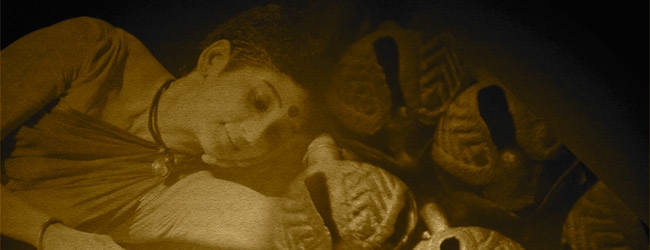
A GLIMPSE OF KOREA THROUGH STORIES
Nirmala Seshadri
February 17th 2008
What do you do when your daughter who's working towards her Class 12 final exams needs that small break in her study routine? Often we find that apart from stepping out for a meal and getting back to the grind, there isn't much else to do. Plays and movies tend to take up too much time. Having to jostle through a crowd hardly makes for a relaxed evening.
But two days ago, Friday the 15th to be precise, we enjoyed the perfect little outing. The Indo Korean Centre organised an evening of storytelling by Cathy Spagnoli, who has done a great deal of research in this field in Korea. The session was held at Chamiers- a short and sweet drive from our home. The other option was to listen to Paul Theroux to Landmark which would have meant battling through evening traffic, getting all stressed out about parking and then being at the mercy of the question askers at such sessions. This, on the other hand, was going to be a performance moment of sorts.
To be honest this was the first storytelling moment I would be experiencing and I didn't know quite what to expect. The space, tastefully done up, was intimate and inviting. It was a refreshingly small group of people who were obviously there not to be seen, but to listen. And to the credit of Rathi Jaffer and her team at InKo Centre they seem to have a way of organising these informal, intimate and insightful sessions with simplicity, yet panache.
Now over to Cathy Spagnoli who has shared hundreds of stories in a variety of settings across Asia, USA and Canada, with audiences of all ages. Her visit to Chennai this time is aimed at bringing alive Korea through stories. She says, "Korea holds an important place in Asian history. Yet because of its physical location, Korea has often and wrongly, been viewed as a 'shrimp between two whales.' Yet despite its small size, its challenging location and its turbulent history, Korea has a very rich and unique culture. As a storyteller and writer who has collected and shared Korean stories for many years, I have been blessed by the kindness of Koreans and amazed at their energy and will. I am eager to share, in my 'adopted' city of Chennai, some of the stories that Koreans have told me as important pieces of their cultures."
It is perhaps relevant to mention at this point that Cathy has been married for the last 30 years to the Chennai sculptor, Paramasivam. They live with their 28 year old son, Manu, on Vashon Island, which is a 20-minute ferry ride from Seattle. They also spend time in their second home, Cholamandal.
"In my search for stories, I've slid through Indonesian rice fields, sipped sake with Japanese epic singers, met Korean monks in high mountain temples, hiked the Himalayas with Tibetan dancers, marvelled at Kamishibai Festivals, and shared tea with warmhearted Southeast Asian refugees." That evening she also shared how she broke her wrist while coming down a mountain in Korea and was carefully brought to safety by a Korean couple. And then her experience with both Western and traditional Korean medical treatment there.
During the spellbinding session that lasted just over an hour, Cathy subtly interwove actual stories, with tales of how she arrived at these tales, with insights into Korean culture and into the history and art of storytelling in Korea. All this was done very seamlessly. I found myself not being fully aware of where one ended, where the other began. I just let Cathy carry me through it all with the one device that she used in a way that only a master storyteller can- Voice.
I have never been one for stories. I often find myself losing threads and getting distracted. Even when it comes to jokes, I am usually the one who laughs last, and that too after the joke has been explained to me. I can never ever repeat a joke.
But that evening I sat wide-eyed receiving all that Cathy had to share. After a long time I felt like a child in the way that I listened with fascination. And yet it was the adult in me that related to the little moral at the end of each story. And so in my own way I was moving seamlessly in and out of the child and the adult. It was a delightful experience and a new one too. The session had an interactive element to it too. Cathy narrated one of the stories through sign language in addition to voice, which had the entire audience shouting out words to fill in the blanks.
Cathy's decision to end with the ghost story was a brilliant one. It was indeed the high point in the evening. All lights were dimmed and she began frightening even the adult in me. With that powerful and versatile voice, she carried us through fear, pathos.
Frankly I feel the evening should have ended on that note, as Cathy had planned. The ending, that could have been a dramatic one, became an anticlimax of sorts when, at the request of an audience member, Cathy went into the telling of a Native American tale. The focus was shifted and somehow diffused. In spite of the tangential ending it was a delightful, insightful and refreshingly unpretentious evening.
As a fitting conclusion, the authors on the blog spent the rest of the evening eating, chatting and communing with Nature at Chamiers.
Some of the information in this piece has been obtained from InKo Centre's magazine "FOCUS" (Issue No. 4).
Photograph of Cathy Spagnoli is from www.cathyspagnoli.com
